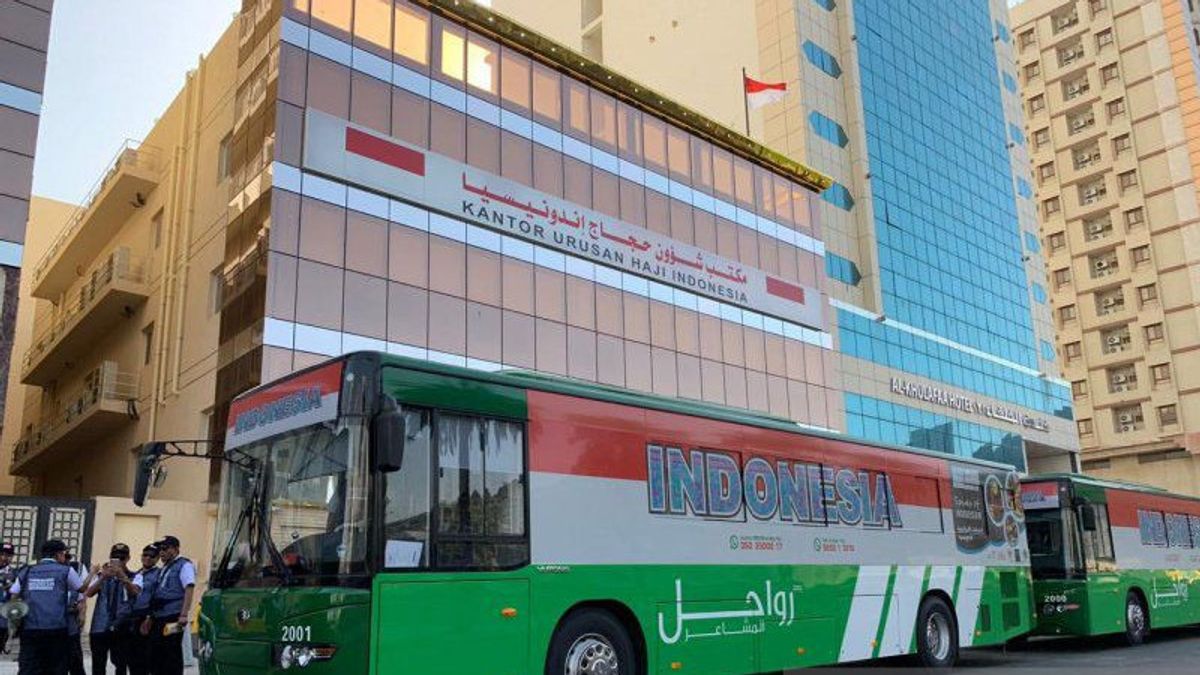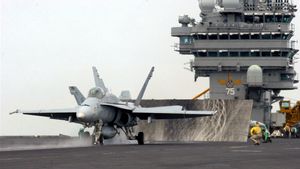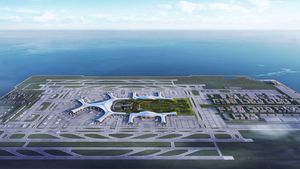JAKARTA - The prayer bus provided for transportation for Indonesian pilgrims in Makkah, Saudi Arabia is equipped with stickers and bus marking cards so that pilgrims do not get lost and do not get into the wrong vehicle.
"The shalawat buses will be equipped with stickers with colors, numbers and writing," said Director of Foreign Hajj Services at the Ministry of Religion, Subhan Cholid, quoted by Antara, Wednesday, May 25.
The prayer bus will serve the congregation non-stop for 24 hours from the hotel to the Grand Mosque. The buses will be equipped with stickers to mark routes and service sectors.
There are five sectors occupied by the Indonesian congregation, namely Mahbas Jin, Syisyah, Raudah, Jarwal and Misfalah. Congregants from 13 embarkations will be stationed in each of these sectors.
Stickers will be affixed to each bus, while cards are given to each congregation.
The white sticker or card for the Mahbas Jin-Bab Ali route is marked with a number 1, the blue color for the Syisyah-Syieb Amir route is numbered 2, the green color for the Raudah-Syieb Amir route is marked with a number 3, black for the Jarwal-Syieb Amir route is number 4 and the color brown for the Misfalah-Jiad route number 5.
"For those who cannot read, they can be marked with numbers or colors. We have thoroughly studied this," he said.
The shalawat bus will operate 24 hours in 22 days from June 13 to July 4, 2022 and will stop operating during the peak period of Hajj, namely Armuzna/Masyair on July 5-12 2022 because the bus will be used to transport pilgrims to Arafah, Muzdalifah and Mina.
After these eight days, the shalawat bus will again provide 24-hour service from July 13 to August 4, 2022.
For information, accommodation in the Mahbas Jin sector is prepared for pilgrims from the Surabaya Embarkation (SUB) from East Java, Bali, East Nusa Tenggara and the Lombok Embarkation (LOP) from West Nusa Tenggara.
In the Syisyah sector, it is prepared for pilgrims from the Batam Embarkation (BTH) from Riau, Riau Islands, West Kalimantan and Jambi) as well as pilgrims from the Ujung Pandang Embarkation (UPG) pilgrims from South Sulawesi, West Sulawesi, Southeast Sulawesi, Gorontalo, Maluku, North Maluku, Papua and West Papua.
Meanwhile, accommodation in the Raudah sector is for the Aceh Embarkation (BTJ) congregants from Aceh, the Jakarta Embarkation (JKG) congregants from Lampung, Banten and DKI Jakarta.
Raudah will also be occupied by pilgrims from the Palembang Embarkation (PLM) from South Sumatra and Bangka Belitung, as well as pilgrims from North Sumatra via the Medan Embarkation (KNO).
While the Jarwal sector will be occupied by the Solo Embarkation (SOC) congregants from Central Java, the Padang Embarkation (PDG) from West Sumatra and Bengkulu and the Banjarmasin Embarkation (BDJ) from Central Kalimantan and South Kalimantan as well as the congregation from the Balikpapan Embarkation (BPN) from East Kalimantan, Sulawesi. North and Central Sulawesi.
Misfalah Sector for Jakarta-Bekasi Embarkation (JKS) for pilgrims from West Java.
The English, Chinese, Japanese, Arabic, and French versions are automatically generated by the AI. So there may still be inaccuracies in translating, please always see Indonesian as our main language. (system supported by DigitalSiber.id)









